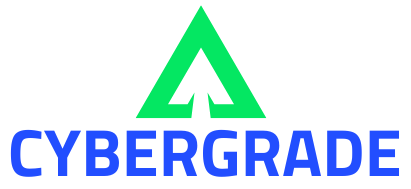Use Multi Factor Authentication
Setting up MFA might sound technical, but it’s a simple and powerful way to protect your business from cyber threats. By setting up MFA on your accounts, you’ll enhance your security without needing extensive IT knowledge.
What’s MFA?
Multi-Factor Authentication (MFA) is an additional layer of security designed to protect your online accounts beyond just using a password. Instead of relying solely on something you “know” (your password), MFA combines two or more of the following factors:
- Something You Know: A password or PIN.
- Something You Have: A smartphone, security token, or authentication app.
- Something You Are: Biometrics such as fingerprints or facial recognition.
This combination ensures that even if a hacker gets hold of your password, they’ll still need the other factor(s) to gain access to your account.
How Can MFA Protect My Accounts from Bad Actors?
Cybercriminals are constantly finding ways to steal passwords, either through phishing attacks, data breaches, or malware. MFA adds an extra layer of protection, making it significantly harder for them to break into your accounts.
Here’s why MFA is so effective:
- Reduces Reliance on Passwords: Even if your password is stolen, the hacker still needs another form of verification (e.g., a code sent to your phone) to gain access.
- Prevents Unauthorised Access: Without access to your second authentication factor (like your phone or a fingerprint), it’s nearly impossible for bad actors to log in, even with the correct password.
- Increases Time and Effort for Hackers: MFA introduces an additional step for hackers to bypass, increasing the complexity and effort required for a successful attack. Most attackers will simply move on to an easier target.
By using MFA, you’re not just making it harder for criminals to access your accounts—you’re deterring them from even trying.
What Are Common Types of MFA Methods?
Common MFA Methods include :
- SMS Codes: A code is sent to your phone via text message.
- Authenticator Apps: Apps like Google Authenticator or Microsoft Authenticator generate a time-based code that you enter after your password.
- Email Verification: A code is sent to a secondary email address.
- Biometric Verification: Uses fingerprints or facial recognition.
Choose an MFA Method that is easiest and most convenient for your business. For most small businesses, using an authenticator app is a simple and effective choice.
Which Accounts Should I Consider Enabling MFA On?
The simple answer is all accounts that offer MFA should have it enabled. However, you should prioritize certain accounts that contain sensitive personal or business information:
1. Email Accounts
Your email is often the gateway to many of your other online accounts. If a hacker gains access to your email, they can easily reset passwords for banking, social media, or business accounts. It’s crucial to enable MFA on your personal and work email accounts.
2. Financial Accounts
Any account tied to your money—like online banking, payment apps (PayPal, Venmo), or investment accounts—should have MFA. These are high-value targets for hackers, and MFA significantly reduces the risk of unauthorized transactions.
3. Social Media Accounts
Hackers often target social media accounts to steal identities or scam your friends and followers. Enabling MFA on platforms like Facebook, Instagram, LinkedIn, and Twitter can prevent account takeovers.
4. Business Accounts
For business owners and employees, enabling MFA on systems that store sensitive company data (CRM platforms, cloud storage, collaboration tools like Slack or Teams) is essential. Cybercriminals often target small businesses for financial gain or intellectual property theft.
5. Online Shopping Accounts
Accounts tied to e-commerce platforms like Amazon, eBay, or online retailers often store payment information. MFA can protect you from unauthorized purchases and fraud.
6. Cloud Storage and File-Sharing Accounts
Services like Google Drive, Dropbox, or Microsoft OneDrive contain sensitive personal and work-related documents. MFA will protect your stored data from unauthorized access.
7. Healthcare Accounts
If you manage healthcare records or insurance information online, these accounts often contain highly sensitive personal data. MFA is essential to protect your privacy.
Conclusion: Secure Your Accounts with MFA Today
MFA is a simple, effective, and increasingly necessary tool in the fight against cybercrime. By enabling it on your most critical accounts, you add an extra barrier that can stop bad actors in their tracks. If you’re unsure whether your accounts offer MFA, take a moment to check their settings—it’s a small step that can make a big difference in your online security.
Need help setting up MFA or strengthening your business’s cybersecurity?
Contact us at CyberGrade to learn more about how we can help safeguard your digital assets!
